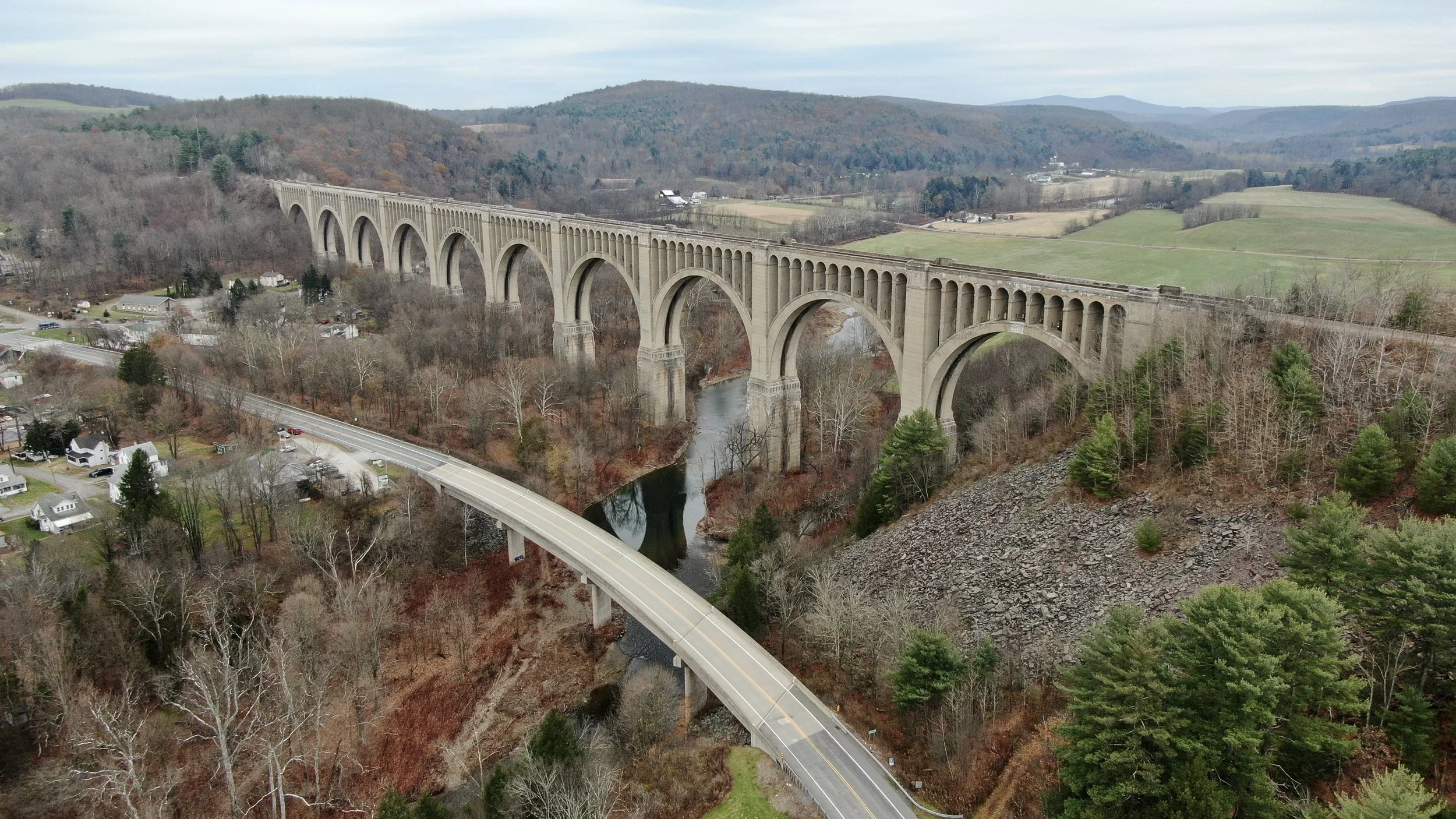Tunkhannock Viaduct
Also known as the Nicholson viaduct, is the largest structure of its kind. It was built in 1912-15 of reinforced concrete to carry the Lackawanna Railroad over the Tunkhannock Creek near Nicholson, Pennsylvania. It is 2,375 feet long and 34 feet wide, and carries double-track railway traffic at a height of 240 feet above the creek.
The viaduct consists of ten visible 180-foot and two buried 110-foot full-centered arches. Each arch is made of two halves, one on each face of the bridge, with a six-foot opening between them. The piers supporting the arches are carried to bedrock. The depth of excavations was 60 to 138 feet. The roadway is supported by small spandrel arches connected to the 180-foot arches by vertical transverse walls. The first section of the original main line of the Lackawanna Railroad was constructed in 1851 to move coal from the Lackawanna Valley to markets to the north. It ran from Scranton to connect with the Erie Railroad at Great Bend.
The Tunkhannock Viaduct is an integral part of the Clark Summit New Milford cutoff whose section from Scranton to New Milford was essentially the same as that built in 1851 and was in much need of modernization. George J. Ray, chief engineer of the Lackawanna Railroad, and his fellow planners approached the problem with daring and imagination. They proposed to cut across the natural drainage of the country at right angles instead of following rivers, to lop off the tops of the mountains and use the earth and rocks to fill the valleys, and to layout a line, if possible, without grades and curves. The railroad climbed from Scranton to Clarks Summit but then it was to stay at the same level until it reached New Milford and finally to dip slightly down into the valley of the Susquehanna River. The New Milford cutoff saved only 3 miles but the reduction of grades and the elimination of curves cut running time between Buffalo and Hoboken by hours and eliminated the need of helper engines along these sections. The savings in extra engines and crews more than compensated the railroad for the expenditures made.
The contract for the construction of the viaduct was awarded in the spring of 1912 to Flickwir and Bush Incorporated, Flickwir being a veteran contractor experienced in building railroads and Bush an ex-chief engineer of the Lackawanna Railroad. Giant wooden towers were built at each end of the crossing and another one near the center to support an aerial tramway for moving materials to position on the project. The towers at the ends were 169 feet high while that at the center soared 300 feet into the air. Under the tramway there was a beehive of activity, with 4000 feet of narrow gage track over which a rolling stock of 14 flat cars and 4 engines hauled the reinforcing steel rods and buckets of concrete from the mixer to the foot of the central tower, where it was hoisted to the tramway and moved laterally into the desired position. As the piers reached the first level, giant steel arches were placed to support wooden forms for the main arches and remained in place until the concrete was properly cured. The steel was then moved to another opening where the process was repeated. Construction was completed in 1915 and the viaduct has been in continuous service since that time without any major modifications or extensive repairs.

